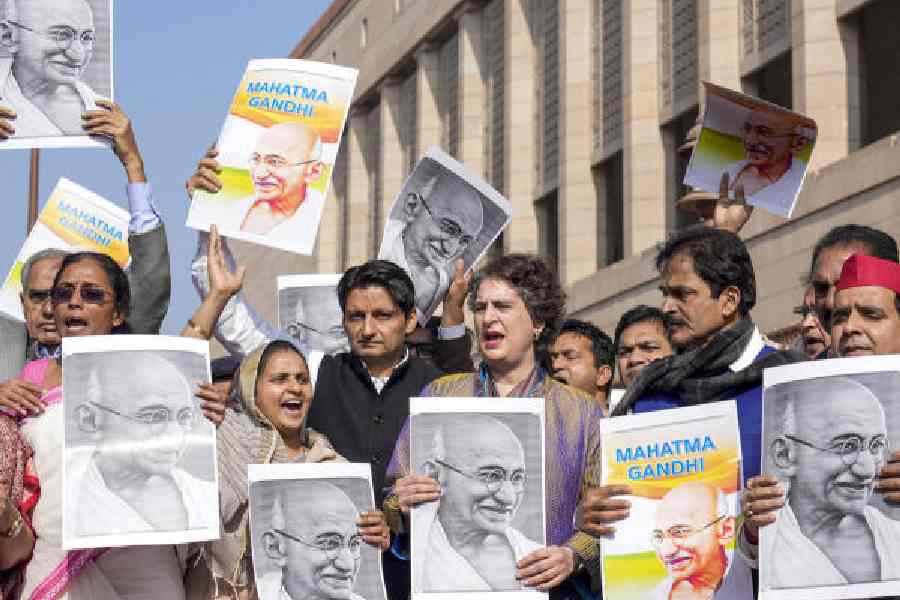India’s economy is estimated to contract 9.6 per cent in the fiscal year 2020-21, reflecting a sharp drop in household spending and private investment, and the growth is expected to recover to 5.4 per cent in 2021, the World Bank said on Tuesday.
In its Global Economic Prospects report, the World Bank said that the informal sector, which accounts for four-fifths of employment, has been subject to severe income losses during the Covid-19 pandemic.
“In India, the pandemic hit the economy at a time when growth was already decelerating. The output is estimated to contract by 9.6 per cent in Fiscal Year 2020/21, reflecting a sharp drop in household spending and private investment,” it said.
“In India, growth is expected to recover to 5.4 per cent in 2021, as the rebound from a low base is offset by muted private investment growth given financial sector weaknesses,” the bank said.
The informal sector, which accounts for four-fifths of employment, has also been subject to severe income losses during the pandemic.
Recent high-frequency data indicate that the services and manufacturing recovery are gaining momentum, the report said.
Indicators
The sustained improvement in high-frequency economic indicators along with the impending vaccination programme has raised optimism of an improved performance in the second half of the current fiscal year, the finance ministry said in its report on the economy for December.
However, it warns that the spread of the mutant variant of the coronavirus andsocial distancing fatigue could be a downside risk to recovery.
“The downside risk, however, remains due to the spread of the UK variant and fatigue from social distancing guidelines,” it said. “The emphasis on continued observation of ‘Covid appropriate’ behaviour with the due exercise of caution and surveillance needs to be sustained.”
“The effective management of Covid-19 spread despite the festive season and onset of winter season combined with sustained improvement in high frequency indicators along with the easing of lockdown restrictions distinguish Indian economy as one riding against the Covid wave,” the report said.
World Bank
The World Bank said it expects the global economy to expand 4 per cent in 2021, assuming an initial Covid-19 vaccine rollout becomes widespread throughout the year. A recovery, however, will likely be subdued, unless policy makers move decisively to tame the pandemic and implement investment-enhancing reforms.
India’s growth is expected to recover to 5.4 per cent in 2021 as the rebound from a low base is offset by muted private investment growth given financial sector weaknesses. In the financial sector, non-performing loans were already high before the pandemic, the World Bank, in its January 2021 Global Economic Prospects, said.
The pandemic hit the economy at a time growth was already decelerating. Output is estimated to contract 9.6 per cent in fiscal year 2020-21, reflecting a sharp drop in household spending and private investment.
The informal sector, which accounts for four-fifths of employment, has also been subject to severe income losses during the pandemic. Recent high frequency data indicate that the services and manufacturing recovery is gaining momentum, it added.
The Indian economy reported its sharpest economic contraction of 23.9 per cent in the April-June quarter before improving marginally to report a contraction of 7.5 per cent in the July-September quarter. The Reserve Bank of India (RBI) has expressed optimism that the economy may record positive growth in the October-December quarter. Full-year GDP growth is estimated at -7.5 per cent by the RBI.
Sharing improvement in some of the high-frequency data, the report said the sustained spurt in commercial and industrial activity was further corroborated by continued growth in PMI (purchasing manager’s index) manufacturing, power demand, persistent improvement in e-way bills generated and highway toll collection rising above pre-Covid levels
Monthly GST collections attained their record levels in December.
The gross GST revenue collected in December 2020 was Rs 115,174 crore, the highest since the introduction of goods and services tax from July 1, 2017. The liquidity situation remains comfortable as the accumulation of dollars along with the growth of currency in circulation are enhancing liquidity in the banking system despite the average daily net absorptions by the RBI rose in December compared to the preceding month, the report said.
The credit growth improved sharply as reflected in strong non-food credit rise and overall credit growth, thanks to the Emergency Credit Line Guarantee Scheme (ECLGS), which continues to support robust credit disbursements to MSMEs, with Rs 2.05 lakh crore sanctioned to 80.93 lakh borrowers under ECLGS 1.0. Extension of ECLGS to 26 stressed sectors is a further boost to MSME credit growth. Credit growth is further corroborated by a sharp rise in the incremental credit deposit ratio of banks, as per the report.










